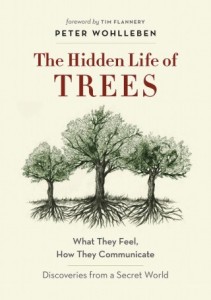nonhuman consciousness
Nonhuman consciousness.
October 3, 2016“…they speak a sophisticated silent language, communicating complex information via smell, taste, and electrical impulses. […] The role forests play in making our world the kind of place where we want to live.” As we’re only just beginning to understand nonhuman consciousnesses, what emerges from Wohlleben’s revelatory reframing of our oldest companions is an invitation to see anew what we have spent eons taking for granted and, in this act of seeing, to care more deeply about these remarkable beings that make life on this planet we call home not only infinitely more pleasurable, but possible at all.”
[…]
“Why are trees such social beings? Why do they share food with their own species and sometimes even go so far as to nourish their competitors? The reasons are the same as for human communities: there are advantages to working together. A tree is not a forest. On its own, a tree cannot establish a consistent local climate. It is at the mercy of wind and weather. But together, many trees create an ecosystem that moderates extremes of heat and cold, stores a great deal of water, and generates a great deal of humidity. And in this protected environment, trees can live to be very old. To get to this point, the community must remain intact no matter what. If every tree were looking out only for itself, then quite a few of them would never reach old age. Regular fatalities would result in many large gaps in the tree canopy, which would make it easier for storms to get inside the forest and uproot more trees. The heat of summer would reach the forest floor and dry it out. Every tree would suffer.
Every tree, therefore, is valuable to the community and worth keeping around for as long as possible. And that is why even sick individuals are supported and nourished until they recover. Next time, perhaps it will be the other way round, and the supporting tree might be the one in need of assistance.”
Maria Papova/brainpickings
The Secret Life of Trees: The Astonishing Science of What Trees Feel and How They Communicate
